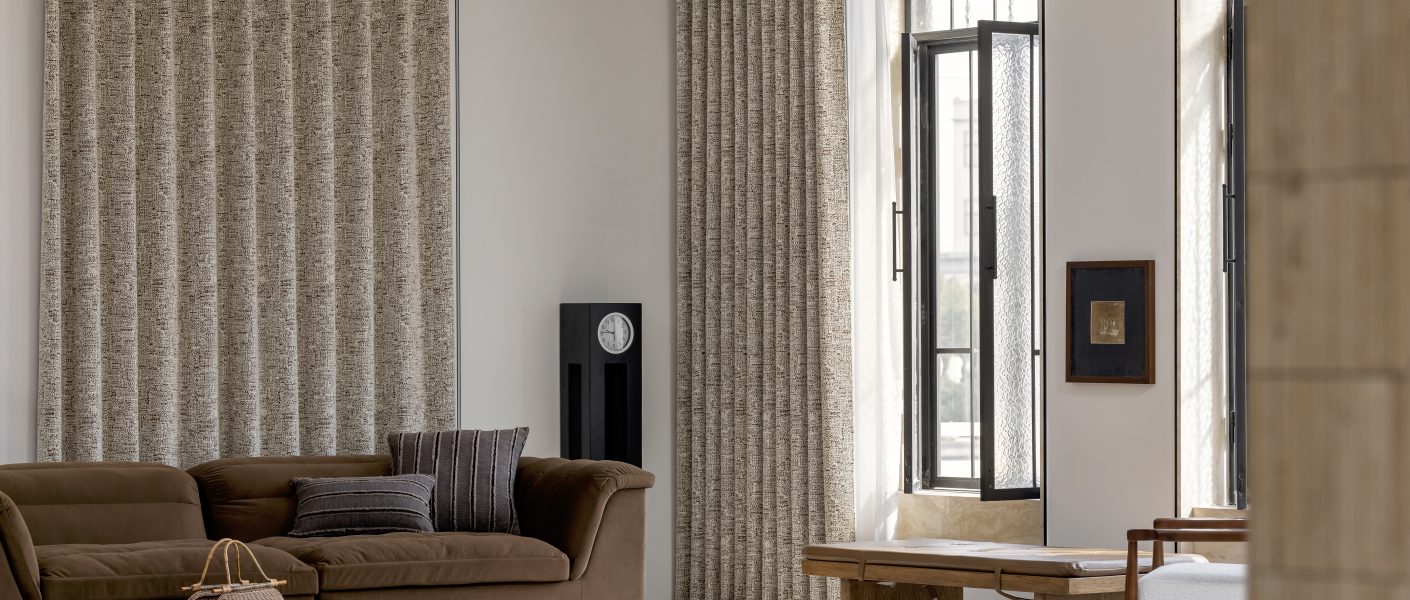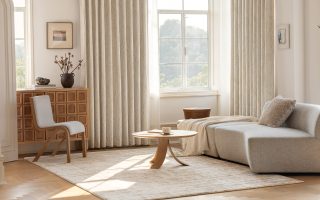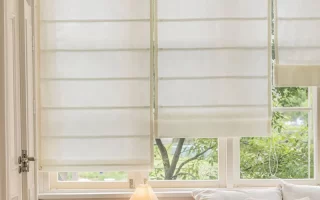Choosing curtain textiles is foundational to upgrading your interiors. Below, we look at four upscale materials and what makes each one distinct:
- Silk
- Linen
- Cashmere
- Velvet
You’ll find the essential traits, pros, and caveats for each so you can pick curtain fabrics that set the right tone for your rooms and genuinely elevate the space.
Key to Luxurious Curtains: Fabric, Craftsmanship, and Fabric Density
What separates a luxurious curtain from an ordinary one? It’s the total package: the fiber origin, the weave, the hand/texture, and the way it falls. Textiles like silk and velvet read premium thanks to natural luster and a soft, refined touch. Finer yarns and more complex weaves intensify that sense of richness, adding visual depth and dimension.
Beyond the textile, construction quality and fullness (how much fabric is used) are decisive. Panels cut at about 1× fullness tend to look flat—almost sheet-like—whereas 2–2.5× fullness forms generous, even waves that feel truly opulent.
Finish details matter, too: accurate cutting, discreet stitching, and controlled drape create a polished result. Pairing high-grade materials with expert tailoring ensures your curtains look elegant and lift the whole room.
1. Silk Curtains
Silk is synonymous with refinement. Its sleek hand and inherent sheen create a fluid drape that instantly upgrades a space. If you’re aiming for a top-tier look, silk sits at the front of the pack.
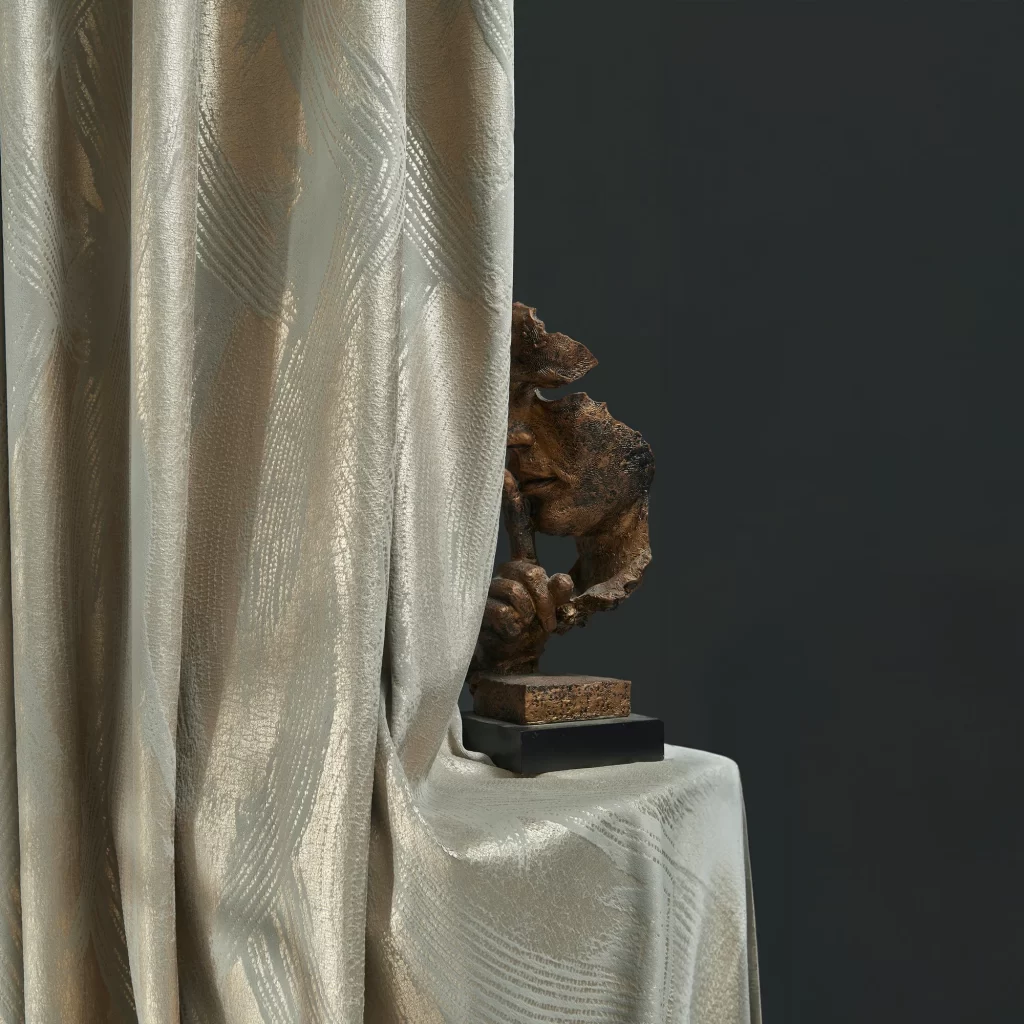
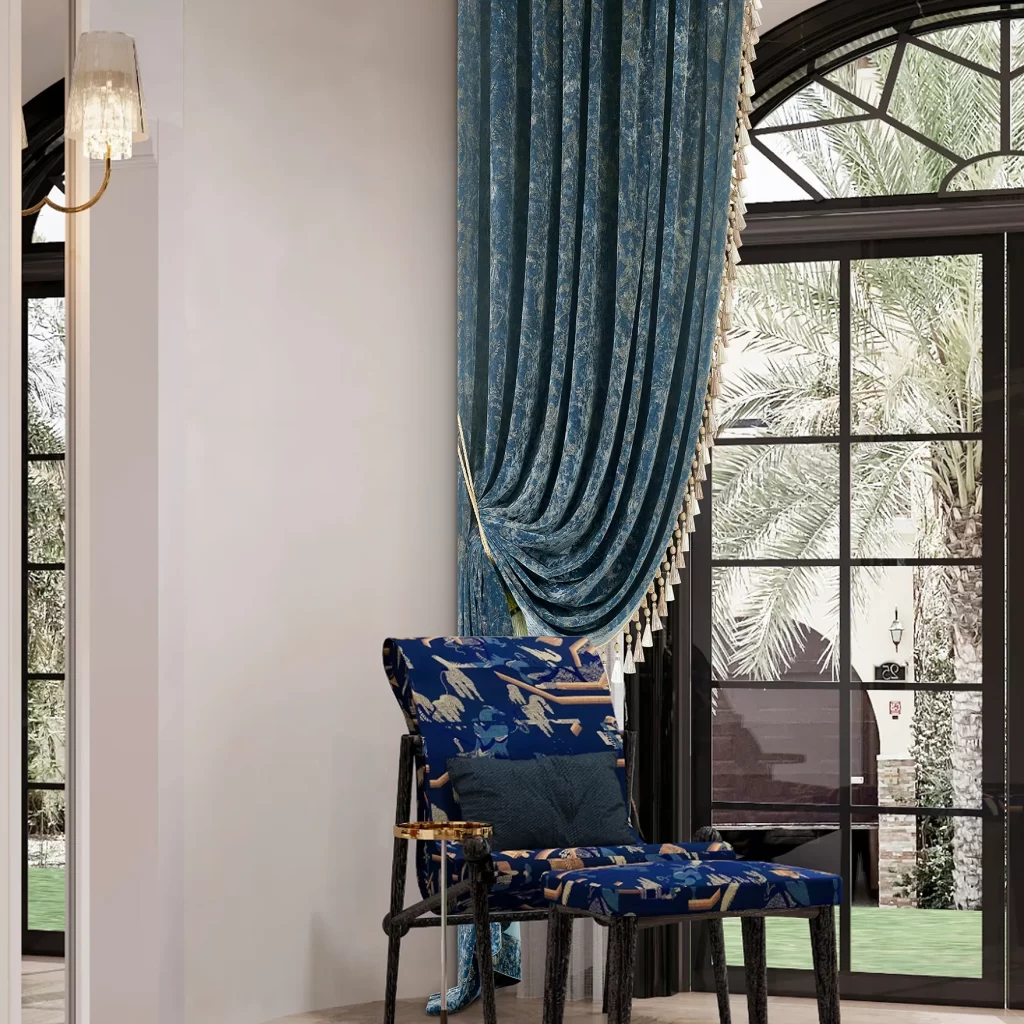
Pros and Cons of Silk Drapery
Silk delivers a sumptuous appearance and graceful movement that brings warmth and sophistication to any room. The tradeoff is maintenance: it needs attentive care to stay pristine. Look after it properly and silk can have a dramatic, long-lasting impact.
Want the silk vibe without the delicate upkeep? A premium silk-blend mimics silk’s glow and fall while better resisting snags, UV exposure, and cleaning hassles. Most options are machine-washable and easier on the budget—luxury feel, lower maintenance.
Styling Tips for Silk Drapes
- Rod choice: Metal or matte wood (gold, brass, dark walnut) complements high-end fixtures.
- Layering: Add light sheers (white or cream) to soften sun while maintaining privacy.
- Color plan: Tonal or complementary schemes—light gray with silver-gray; beige with camel—enhance the sheen.
- Texture mix: Introduce velvet, linen, or cashmere via seating, cushions, rugs, or bedding for depth.
- Best rooms: Living rooms, primary bedrooms, dining rooms, studies; lighter colors help compact rooms feel open.
- Length & pleats: Aim to “kiss” or just skim the floor (≈0.5–1 in / 1–2 cm) with soft, even pleating.
2. Linen Curtains
Advantages and Disadvantages of Linen
Linen nails relaxed elegance with its organic texture and easy drape. It’s breathable and durable, great for warm climates. Pure linen can wrinkle, shed, and fade under strong sunlight—common buyer concerns.
To keep the effortless look while cutting upkeep, sophoradeco linen curtains primarily use a linen–polyester blend for extra resilience and easy care—just machine-wash when needed, no special routine required.
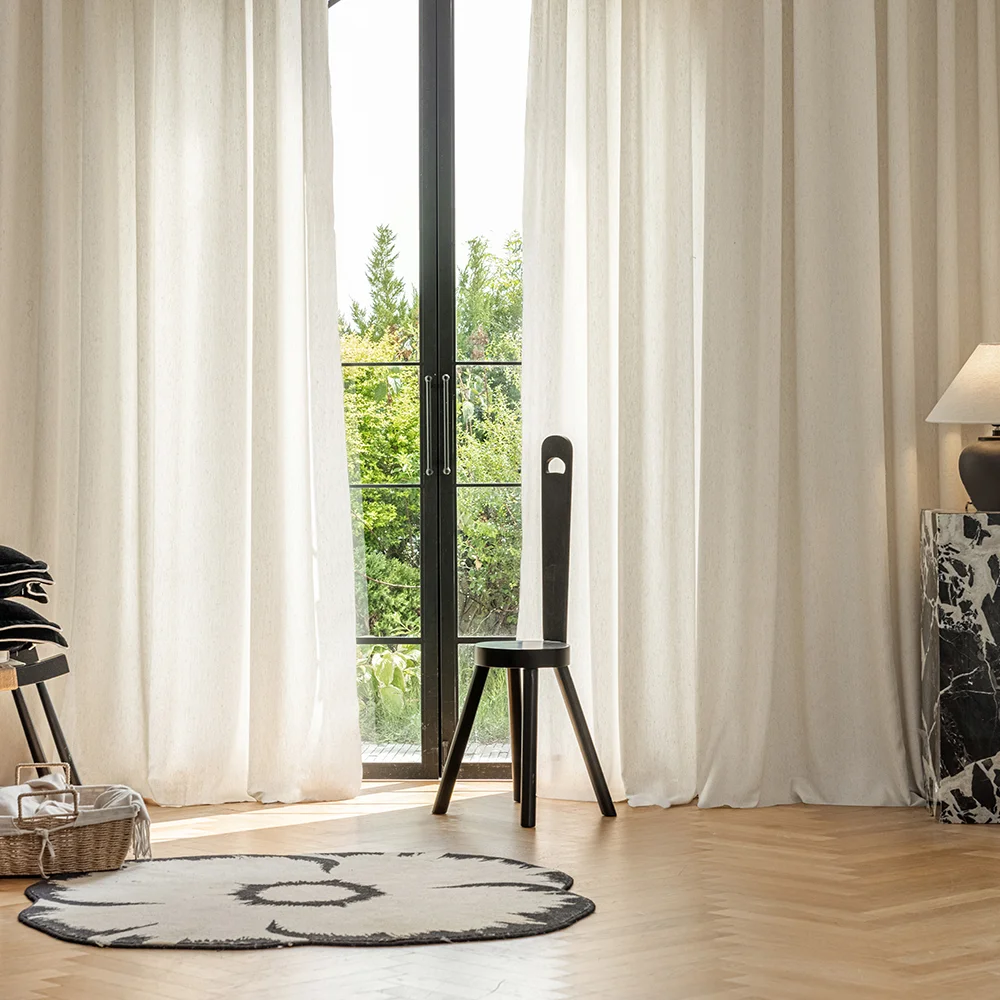
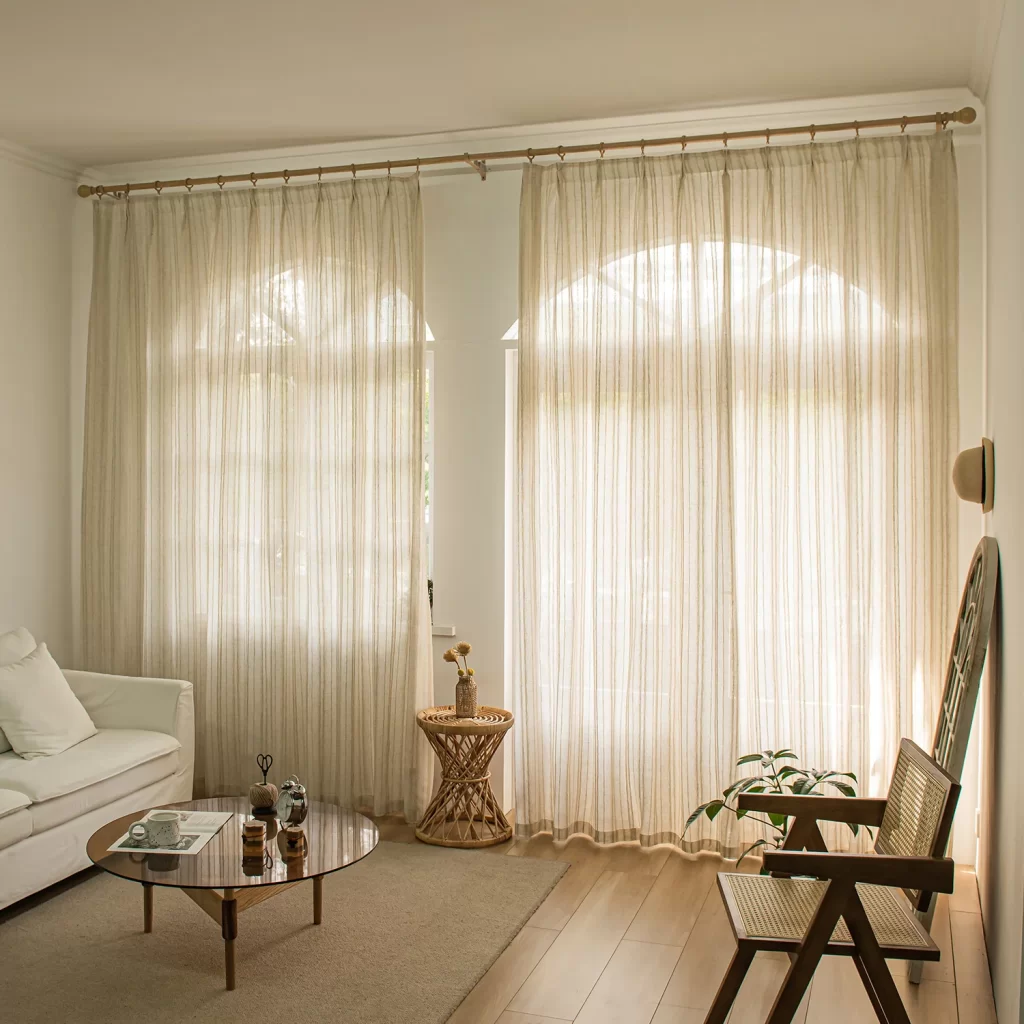
How to Style Linen Curtains in Your Home
Linen is ideal for a breezy, natural vibe—perfect in living rooms, bedrooms, sunrooms, and kitchens where casual elegance fits.
- Layer with sheers or other lightweight fabrics to diffuse glare and add depth.
- Pair with natural materials—wood, rattan, wicker, jute—to reinforce a cozy, laid-back mood.
- Mix in cotton throws, wool cushions, and light rugs for warmth without weight.
- Stick to neutrals/earth tones (beige, taupe, gray) or soft pastels for a calm, cohesive palette.
3. Velvet Curtains
Benefits of Velvet as a Drapery Fabric
Velvet broadcasts luxury at a glance. Its plush, dense pile looks refined and generally resists snags, making it a go-to for sophisticated, high-end interiors.
There are tradeoffs: in winter, static can attract dust and pet hair. Choose high-quality velvet to minimize shedding and keep the pile from flattening or reversing.
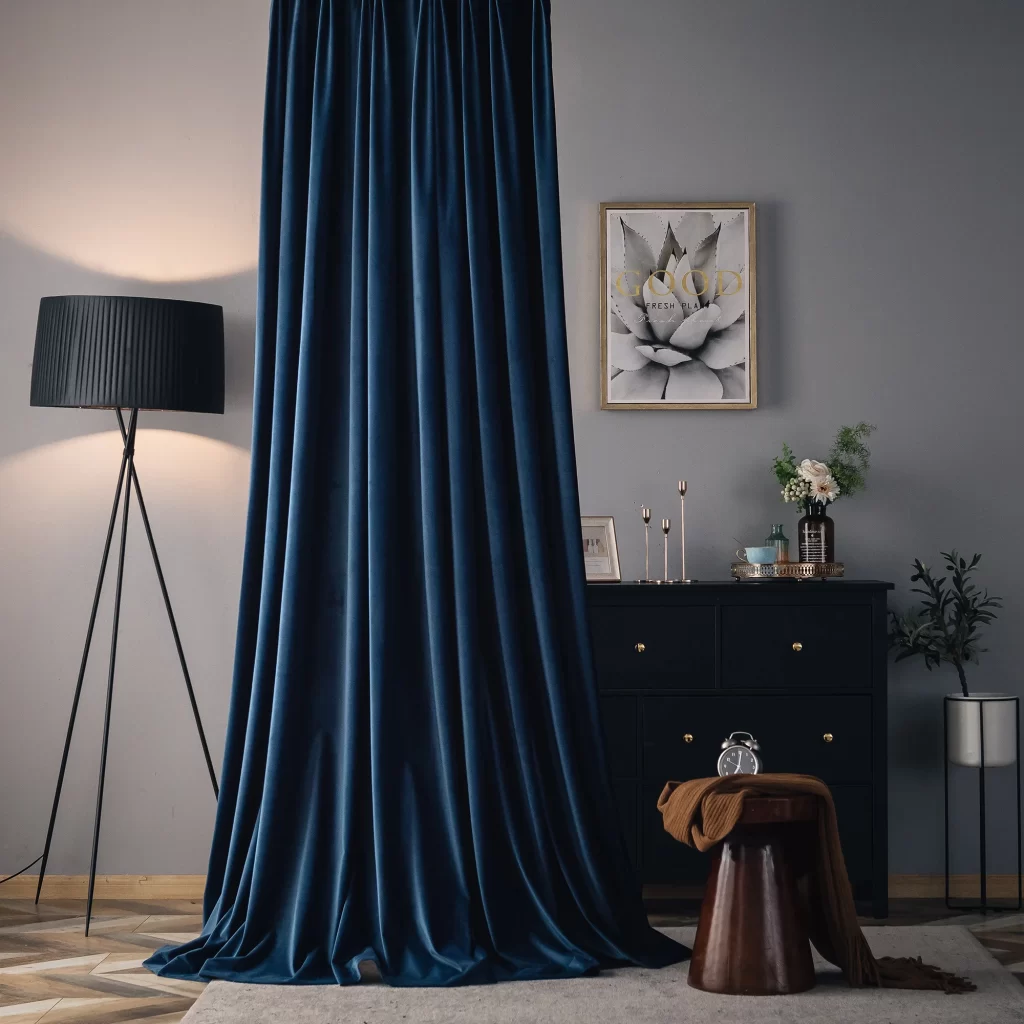
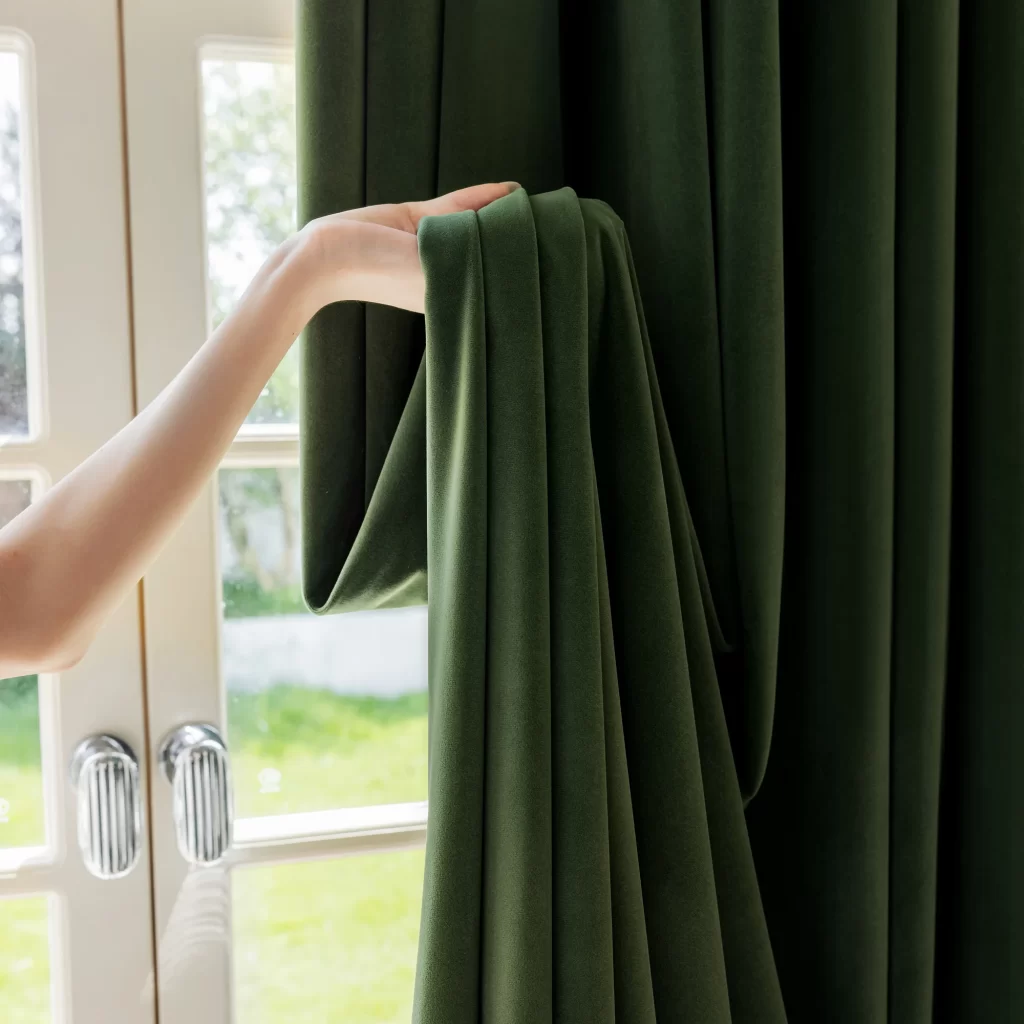
Choosing Velvet for Your Space
Weigh color, weight, and pile height. Darker hues block more light; lighter tones reflect and brighten. Heavier velvet drapes more dramatically and insulates better, but requires sturdier hardware. Velvet remains a timeless drapery choice—well worth considering.
Styling Tips for Velvet Curtains
- Coordinate with upholstered or velvet sofas for a cohesive, luxe statement.
- Use floor-length panels with a slight puddle to dial up elegance and drama.
4. Cashmere Drapery
Characteristics of Cashmere Fabric
Cashmere sits among the most indulgent options. Celebrated for exceptional softness and a fine, delicate texture, it provides warmth and a graceful drape that elevates any setting—luxury on par with silk.
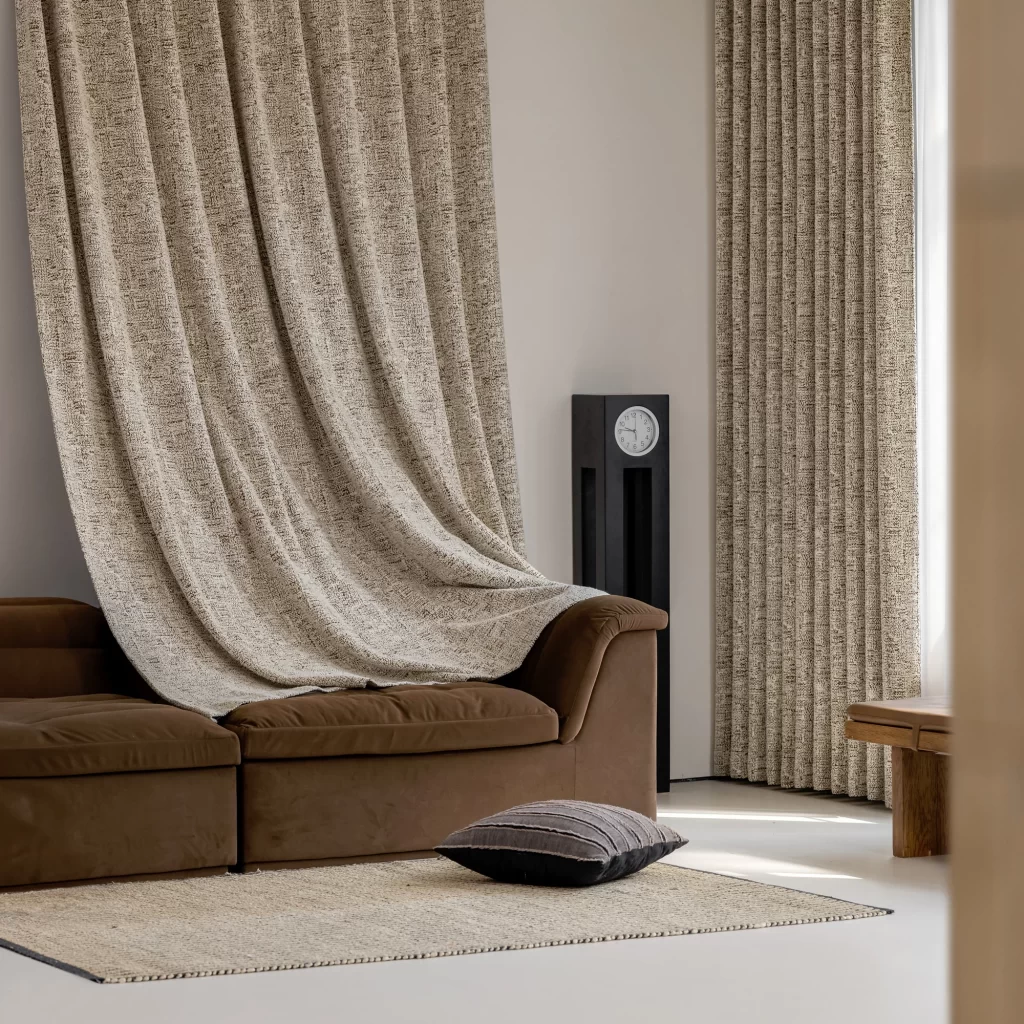
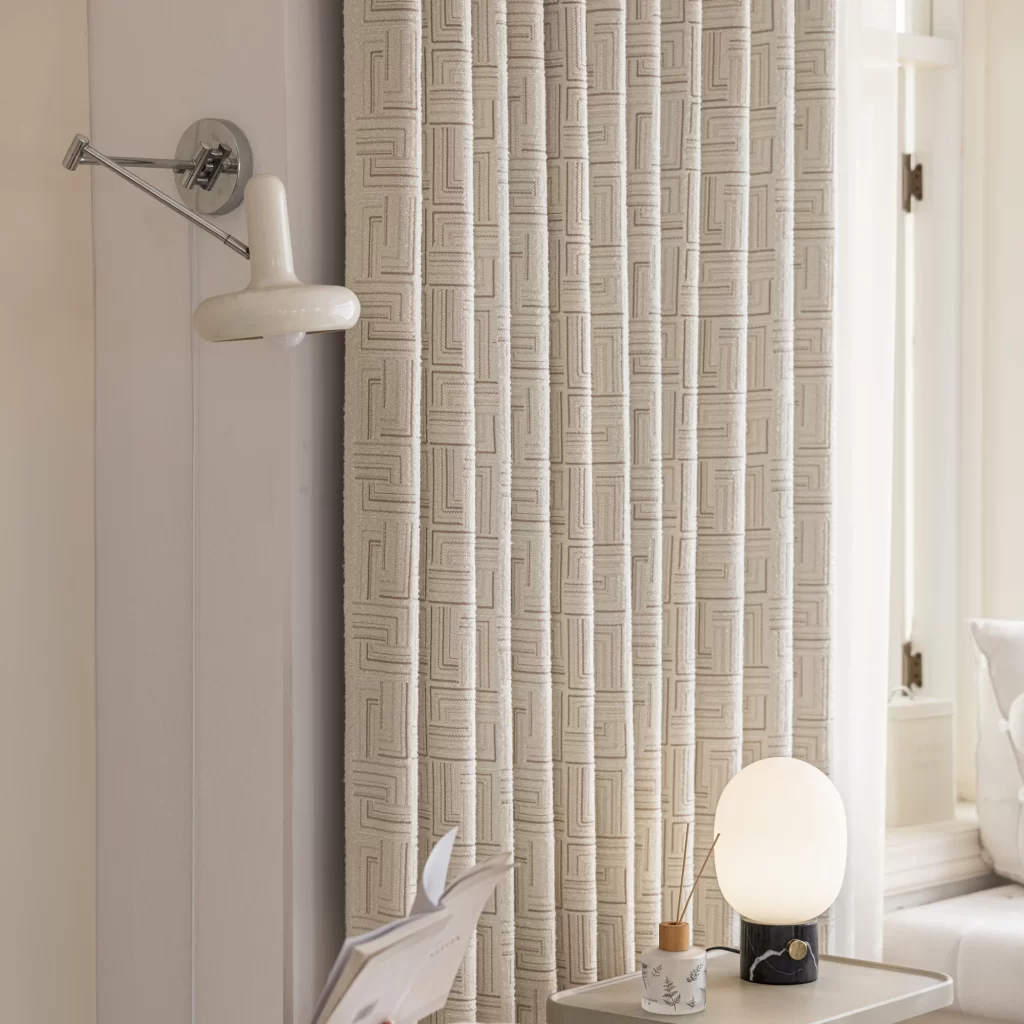
Caring for Cashmere Drapes
For longevity, professional cleaning is recommended. Dust gently with a soft brush and avoid direct sun to reduce fading. Handle with care to preserve the plush hand and elegant look over time.
sophoradeco cashmere curtains use a cashmere–polyester blend—a practical “cashmere coat” for your windows. You get authentic softness and warmth with machine-washable convenience and memory shaping to hold a crisp line without ironing—effortless luxury and comfort.
When to Choose Cashmere Curtains
Cashmere excels in colder climates, especially northern winters. Beyond insulation and light sound dampening, its plush surface creates a cocooning, high-end feel that instantly upgrades a room.
Styling Tips
- Skip deep puddles: Keep hems just off the floor to avoid dragging, dust, and wear.
- Add warm textures: Plush rugs, velvet cushions, and wool throws enhance coziness.
- Color direction: Neutrals, earth tones, and jewel hues (navy, burgundy, forest green) flatter cashmere’s texture.
- Ideal spaces: Bedrooms, living rooms, and studies where warmth, quiet, and polish are desired.
Choosing the Right Fabric for Your Curtains
Factors to Consider in Fabric Selection
Balance the room’s purpose, required light/privacy control, and your personal style. Consider durability, care requirements, and the ambience you want. The right fabric should look beautiful and perform for daily life.
Comparing Fabric Options: Silk, Velvet, Linen, and Cashmere
Before committing, review swatches at home to see how sheen, texture, and drape behave under your lighting.
Final Tips for Selecting the Best Fabric for Curtains
Order samples first. Plan compatible hardware and accessories. If uncertain, consult a designer or workroom for precise fit and finish. Thoughtful choices lead to curtain fabrics that enhance both aesthetics and function—and truly transform your home.
